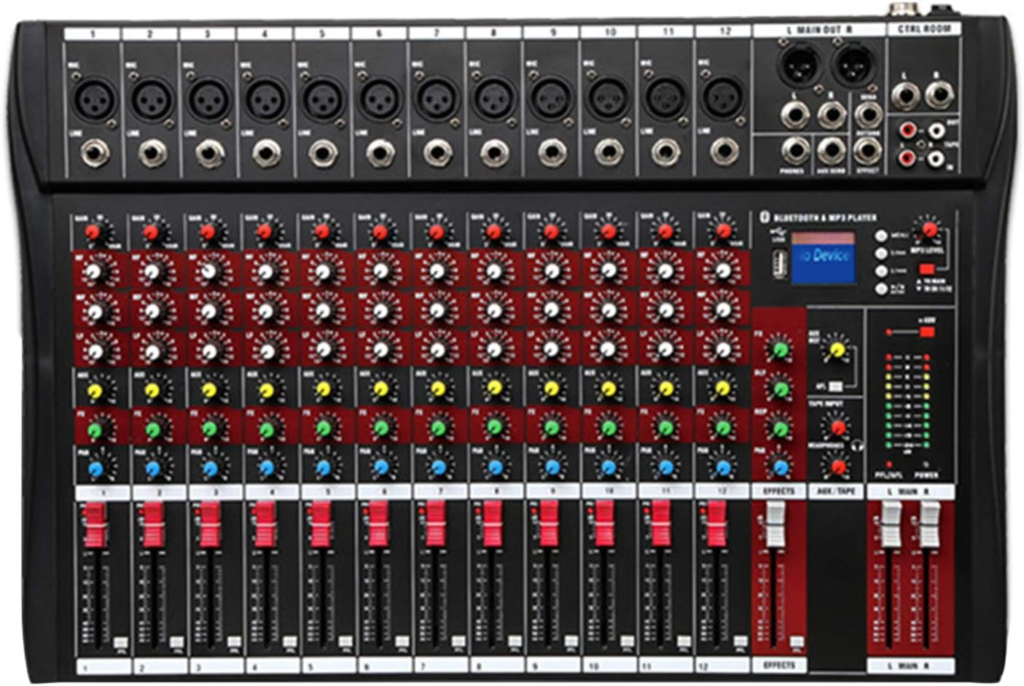A sound editor focuses on selecting, creating, and editing audio elements like dialogue and sound effects, ensuring they fit the project’s narrative and visuals. They prepare the audio for the next stage.

On the other hand, a sound mixer works on the final audio balance. They adjust levels, panning, and effects to create a polished mix that enhances the overall experience. So, while the sound editor sets up the audio, the sound mixer brings it all together for the final presentation.

The Shepard Tone
The Shepard tone is an auditory illusion that creates the impression of a continuously ascending pitch, even though it ultimately doesn’t go anywhere. This effect is achieved by layering several sound waves that are separated by octaves. As one tone fades out, another fades in which maintains the perception of rising sound.
This technique is often used in film and video game soundtracks to build tension and excitement. Hans Zimmer famously employed it in Dunkirk, creating an intense feeling of urgency and momentum throughout the score. The Shepard tone can effectively manipulate the listener’s emotions, making it a powerful tool in sound design.

Diegetic Sound & Non-Diegetic Sound
Diegetic Sound: This is sound that originates from within the story world. Characters can hear it, and it contributes to the environment of the scene. Examples include dialogue, footsteps, sound effects (like a door creaking), and music coming from a radio in the scene.
Nondiegetic Sound: This sound comes from outside the story world and is not heard by the characters. It often serves to enhance the emotional impact or provide context to the audience. Examples include the film’s score, voiceover narration, or sound effects that aren’t tied to the action on screen.
Needle Drop:
•Synchronous sound is sound that is matched with the action and movements being viewed.
•Asynchronous sound is used when the director wants to create tension as the viewer can hear a sound but cannot see its source. Sometimes the audience can’t hear the sound that the character inside the film can hear.
Sound Effects: They are artificially created or enhanced sounds that are used in artistic works to emphasize or express an action, mood or feeling. Sound effects are initially used in radio dramas, but cam be observed more often today in podcasts, theatre, films and TV shows. A famous sound effect is the lightsabre by Ken Butt.
Foley Artists: They record sound over the film by using props to find the perfect sound that would fit into the movie scene.
Leitmotif: A leitmotif or leitmotiv is a “short, recurring musical phrase” associated with a particular person, place, or idea. Leitmotifs condition the audience emotionally for the intervention, arrival, or actions of a particular character.
Sound Bridge: A sound bridge is a type of sound editing that occurs when sound carries over a visual transition in a film.
Voice Over: A voice over is a sound device wherein one hears the voice of a character and/or narrator speaking but the character in question is not speaking those words on screen.
Narration can be first person or “voice of god” style – consider the two different effects on the narrative.
Score/Underscore:
•The score for a film is the (theme) music composed especially for it to enhance the mood/themes of the visuals which appear on screen.
•The underscore is music which is played “under” sequences to enhance mood and this is often mixed with dialogue and/or sound effects.
Sound Design:
In films, sound design helps make everything you hear more engaging. Here are the main parts:
Sound Effects: These are sounds added to make actions feel real, like a door slamming or an explosion.
Dialogue: This is the speech of characters. Good sound design ensures you can hear and understand what they’re saying clearly
.Ambience: These are background sounds that create a mood, like city noise or birds chirping.
Foley: This involves making specific sounds to match the action on screen, like footsteps or rustling clothes.
Music: The soundtrack adds emotion and helps tell the story.
Favourite Sound Track
My favourite sound track in a movie is in All Quiet On The Western Front where there is a deep orchestra. The song is called Remains. It is played when a signifying event is happening in the movie. The composer Volker Bertelmann.